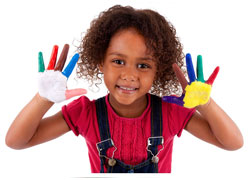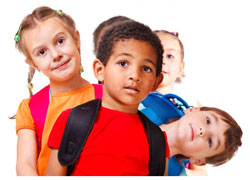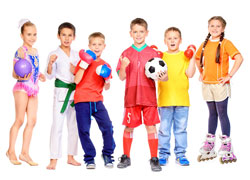Safeguarding and promoting the welfare of children is defined for the purposes of this guidance as:
Child protection is part of the safeguarding process. It focuses on protecting individual children identified as suffering or likely to suffer significant harm. This includes child protection procedures which detail how to respond to specific concerns about a child.


While safeguarding refers to the action we take to prevent harm to children and young people and to promote overall wellbeing, child protection focuses on protecting those individuals identified (often via safeguarding processes) to be suffering from harm, or those who are considered likely to suffer significant harm.
Although sometimes used synonymously, safeguarding is a larger, more holistic process that aims to prevent and if necessary, spot small issues and intervene before larger, more serious concerns develop. Safeguarding concerns could include mental health, bullying or other 'pastoral' issues. Some describe safeguarding as a set of preventative measures, whereas Child Protection is the way in which we respond to harm.
Safeguarding is essential as it prevents harm to children and young people, allowing schools, colleges, sports teams, and other organisations to intervene before a crisis point is reached and improve outcomes for those involved. It also provides robust evidence which can support legal proceedings in finding survivors of abuse justice.
Without safeguarding processes in place, children and young people face serious risk with serious, long-term implications.


'Contextual Safeguarding’ is the approach used to understand and respond to young people’s experiences of significant harm beyond their families. This approach is significant as it recognises relationships that young people form in their local area, in schools and also online, which may expose them to violence and abuse. In these settings, parents and carers carry very little influence and children and young people’s experiences of extra-familial abuse can undermine parent-child relationships.
Therefore, safeguarding practitioners in schools and other organisations need to engage with individuals and sectors who do have influence within extra-familial contexts. Effective safeguarding recognises that assessment and intervention of the risks in these spaces and situations are critical to keeping children and young people safe.
In most settings, there is at least one person who carries the responsibility for overseeing the wellbeing and safety of the organisation's members. For some, it is a role carried out alongside other duties, for example, a Deputy Head Teacher, in other settings it may be the full-time work of an individual such as 'Head of Safeguarding' for a sports team


In UK schools, this role usually carries the title of Designated Safeguarding Lead (DSL), or Designated Safeguarding Person (DSP) in Wales. In independent schools this role is usually owned by the Deputy Head (pastoral) and in other education settings this may be the Headteacher or another senior member of staff
In the UK, schools have a statutory duty to protect their students from harm. School staff are often the first to notice when children and young people are experiencing issues, it is essential for schools to have robust safeguarding processes in place to record, report and manage these issues.
Schools must also follow Safer Recruitment processes for the recruitment of teaching staff, support staff, governors, volunteers, and contractors, to ensure that their pupils are kept safe from those who wish to do them harm.
In other settings such as sports clubs, charities and religious organisations, designated people and/or departments are responsible for keeping their service users safe from harm. Titles responsible for safeguarding can include (but are not limited to) ‘Safeguarding Lead’, ‘Safeguarding Officer’ or ‘Child Protection Officer’.
Providers of community activities, tuition, after-school clubs and sports training can be referred to as 'Out-of-School Settings' (OOSS). OOSS providers, staff, and volunteers also have a duty of care toward the children that they work with.
For more information on the requirements of OOSS see: Keeping children safe during community activities, after-school clubs, and tuition; non-statutory guidance for providers running out-of-school settings.


Safeguarding in International Schools can be complex with schools juggling the legislative requirements of the country in which they are based, the advice, recommendations or guidance of their 'home' country and/or curriculum, and the best interests of their pupils.
Around the world, there are countries that don't yet recognise the need for robust safeguarding legislation or where the focus remains on child protection and identifying only the most serious cases of abuse and harm.
The guidance from the UK's Department of Education (DfE) is widely seen as the most comprehensive of its kind and is often used by international schools as a point of reference when developing their own policies and procedures.
Many of the recommendations made in the DfE's 'Keeping Children Safe in Education' are also mirrored in the safeguarding standards set out by international school membership organisations such as BSME, ECIS, COBIS and others.
The people responsible for safeguarding and/or child protection within International Schools hold a wide variety of job titles from 'Designated Safeguarding Lead' (DSL) which is commonly found in British International schools to 'Pastoral Lead', 'Head of Wellbeing', 'School Counsellor', 'Guidance Counsellor', 'Dean of Student's or simply the Assistant or Deputy Head.